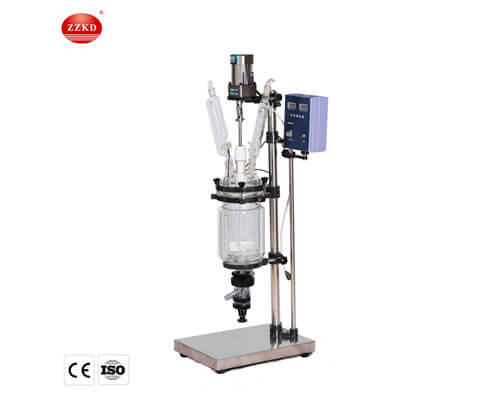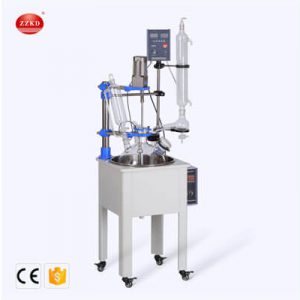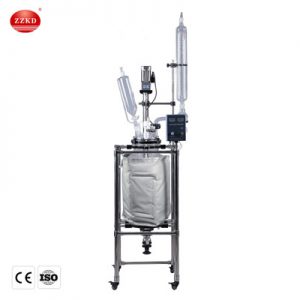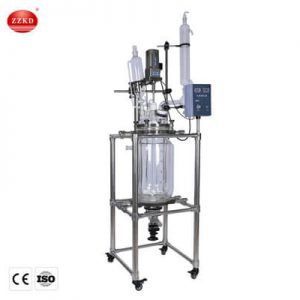Double jacketed glass reactor introduction
A 3L double jacketed glass reactor is a type of laboratory apparatus that is used for various chemical reactions and processes, such as mixing, heating, and cooling. The reactor consists of a cylindrical vessel with two layers, an inner layer made of glass and an outer layer made of stainless steel, which are separated by a vacuum or an insulating material to create a jacket. This double-layered design allows for better temperature control and insulation, making it ideal for reactions that require precise temperature control or are exothermic in nature.
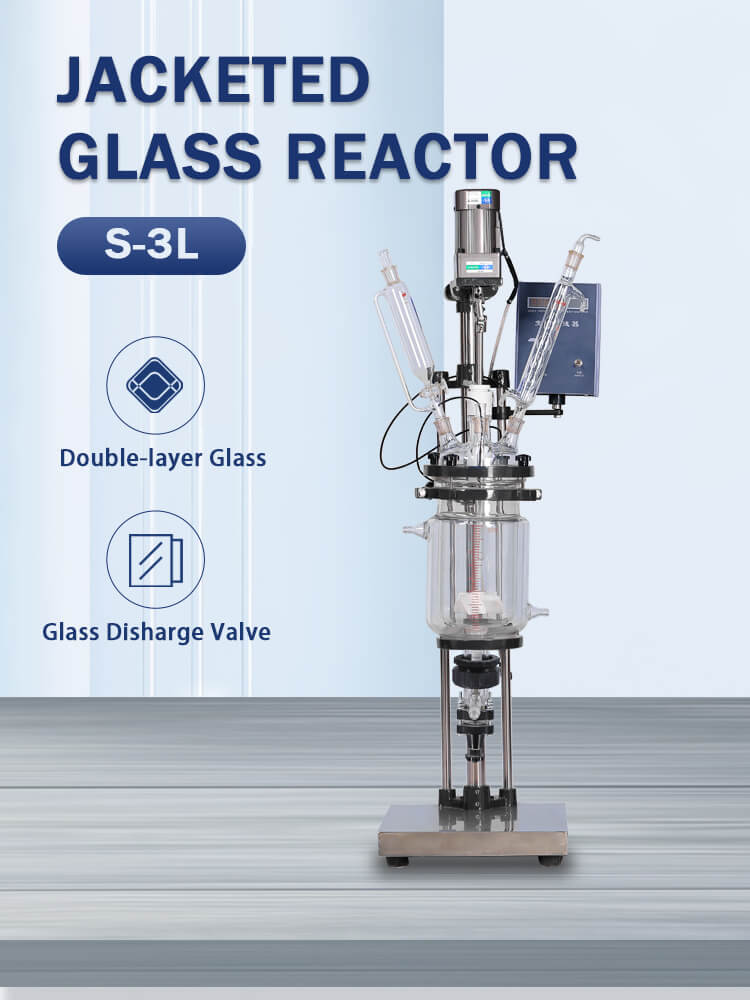
The 3L capacity of the reactor refers to its volume, which is the amount of material that can be contained inside the vessel. The reactor also typically comes with a variety of accessories, such as stirrers, thermometers, and ports for adding or removing materials or gases.
Double jacketed glass reactors are commonly used in a variety of industries, including pharmaceuticals, chemical engineering, and research and development, for applications such as synthesis, distillation, extraction, and crystallization. They are popular due to their versatility, ease of use, and ability to handle a wide range of chemical reactions and processes.
Double jacketed glass reactor Features:
Double-layered design: The reactor consists of an inner layer made of glass and an outer layer made of stainless steel, which are separated by a vacuum or insulating material to create a jacket. This design provides better temperature control and insulation, making it ideal for reactions that require precise temperature control or are exothermic in nature.
Precise temperature control: The double jacketed design allows for precise temperature control, with the ability to heat or cool the contents of the reactor using a circulating fluid in the jacket.
Easy to clean and maintain: The glass construction of the inner layer makes the reactor easy to clean and maintain, with no risk of contamination from metal surfaces.
Versatile: The reactor can be used for a wide range of chemical reactions and processes, including synthesis, distillation, extraction, and crystallization.
Safety features: The reactor typically comes with safety features such as a pressure relief valve, over-temperature protection, and sensors for monitoring and controlling temperature, pressure, and stirring speed.
Accessories: The reactor comes with a range of accessories, including stirrers, thermometers, and ports for adding or removing materials or gases.
3L double jacketed glass reactor is a versatile and reliable laboratory apparatus that offers precise temperature control, ease of use and maintenance, and safety features for a variety of chemical reactions and processes.
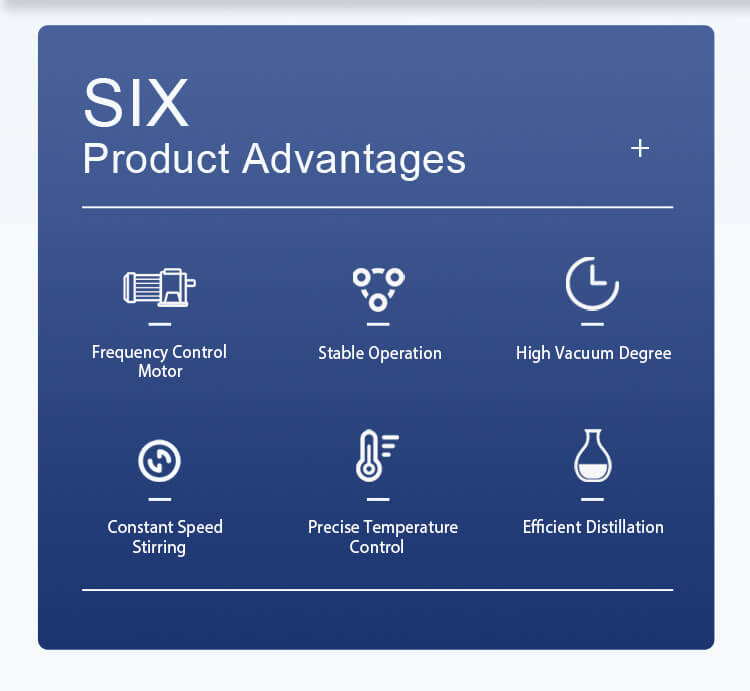
Double jacketed glass reactor Application:
A 3L double jacketed glass reactor can be used for a wide range of applications in various industries, including:
Chemical synthesis: The reactor is ideal for chemical synthesis, allowing for precise temperature control and mixing for reactions that require precise conditions.
Distillation: The reactor can be used for distillation processes, separating and purifying components from a mixture based on their boiling points.
Extraction: The reactor can be used for extraction processes, isolating specific components from a mixture using solvents.
Crystallization: The reactor can be used for crystallization processes, allowing for precise temperature control and mixing to form crystals from a solution.
Polymerization: The reactor can be used for polymerization processes, allowing for precise temperature control and mixing to create polymers from monomers.
Pharmaceutical manufacturing: The reactor can be used for pharmaceutical manufacturing, allowing for precise control of reactions and processes for drug development and production.
Research and development: The reactor is commonly used in research and development for a variety of applications, including testing new reactions, optimizing processes, and developing new materials.
3L double jacketed glass reactor is a versatile laboratory apparatus that can be used in a wide range of applications in various industries, offering precise temperature control, easy maintenance, and safety features.
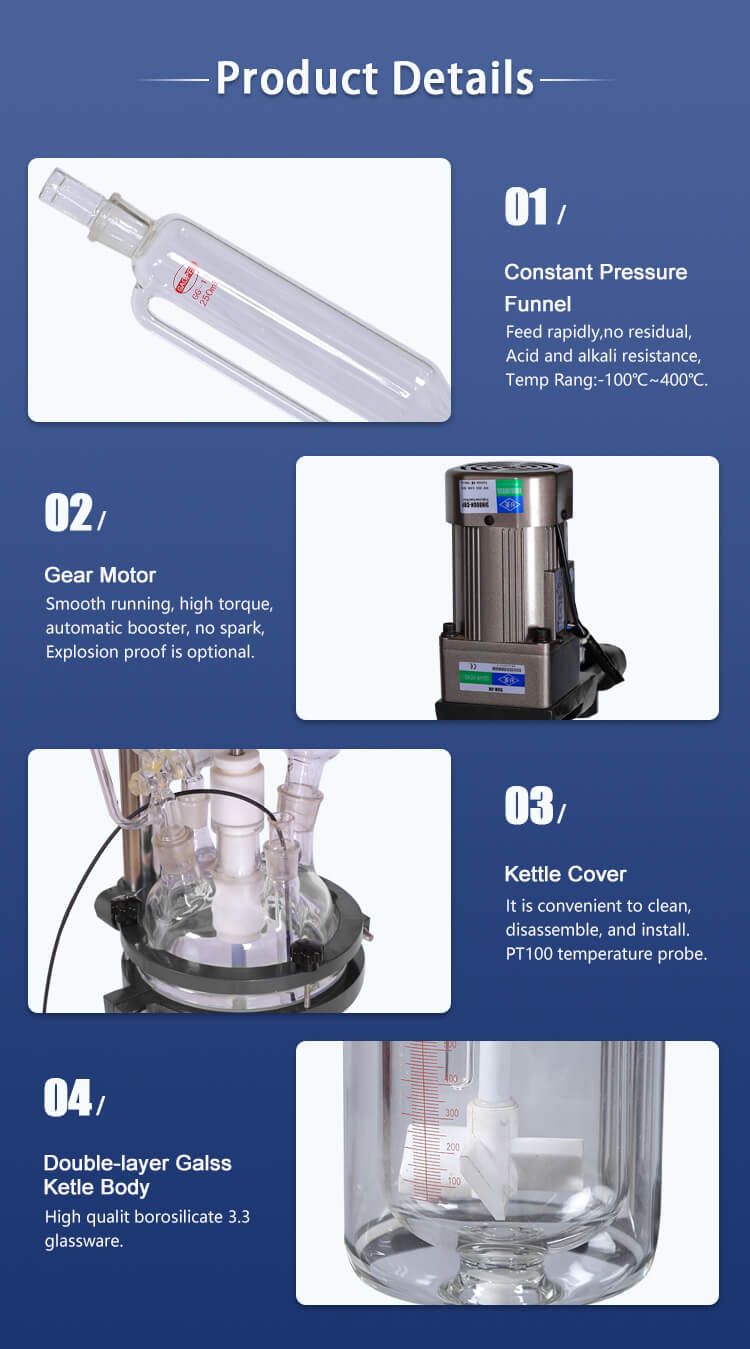
Supporting Equipment for Double jacketed glass reactor:
DLSB-5/10 Refrigerated Circulator
Storage Volume: 5L
Low temperature range: -10℃~RT
Refrigeration capacity: 280~620W
Rated Power: 420W
SHZ-D(Ⅲ) Water Circulating Vacuum Pump
Power: 180W
Flow(L/min): 60
Lift(m): 8
Max.Vacuum(Mpa): 0.098
Tank Capacity: 15L
GYY-5L Heating Circulating Oil Bath
Storage Volume: 5L
Max temperature:200℃
Flow (L/min):15~20
Temperature control range: Water bath: RT~99°C, Oil bath: RT~200°C
Heating power:2000W
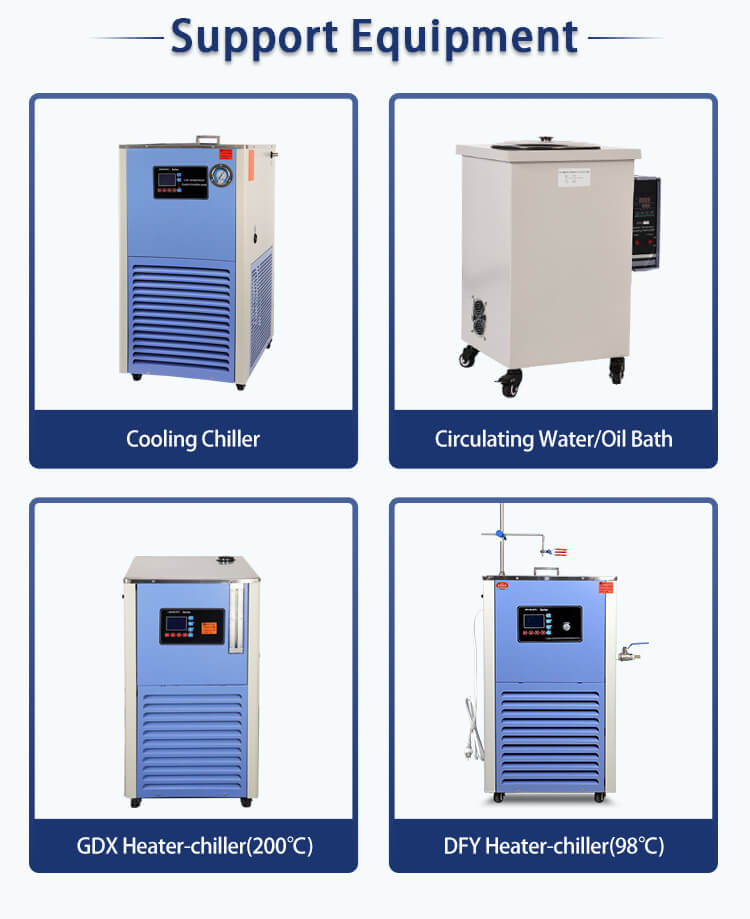
Case : ZZKD Company Selling Double jacketed glass reactor to a French Customer
ZZKD, a leading laboratory equipment manufacturer, recently sold a 3L double jacketed glass reactor to a customer in France. The customer, a research institute based in Paris, required a reactor for their chemical synthesis research and development projects.
The customer had specific requirements for the reactor, including precise temperature control and ease of use. After researching several suppliers, they chose ZZKD due to their reputation for high-quality products and excellent customer service.
Upon receiving the reactor, the customer was impressed with the build quality and ease of use. The reactor was equipped with a range of accessories, including a stirrer and thermometer, which made it easy to set up and begin using for their research projects.
The double jacketed design of the reactor allowed for precise temperature control, which was critical for their research projects. The customer was particularly impressed with how easy it was to heat or cool the contents of the reactor using a circulating fluid in the jacket.
Overall, the customer was very satisfied with their purchase from ZZKD. The quality of the reactor, combined with the excellent customer service they received, exceeded their expectations. They reported that the reactor has performed exceptionally well for their chemical synthesis research projects, and they have already recommended ZZKD to colleagues in their field.

In conclusion, the sale of the 3L double jacketed glass reactor to the French customer was a success for ZZKD. The high-quality product and excellent customer service have resulted in a satisfied customer who has recommended the company to others in their field. This sale demonstrates ZZKD’s commitment to providing top-quality laboratory equipment and exceptional customer service to their customers around the world.

